Miniature poodle vs toy poodle: What's the difference?
Vet reveals everything you need to know about the miniature and toy poodles
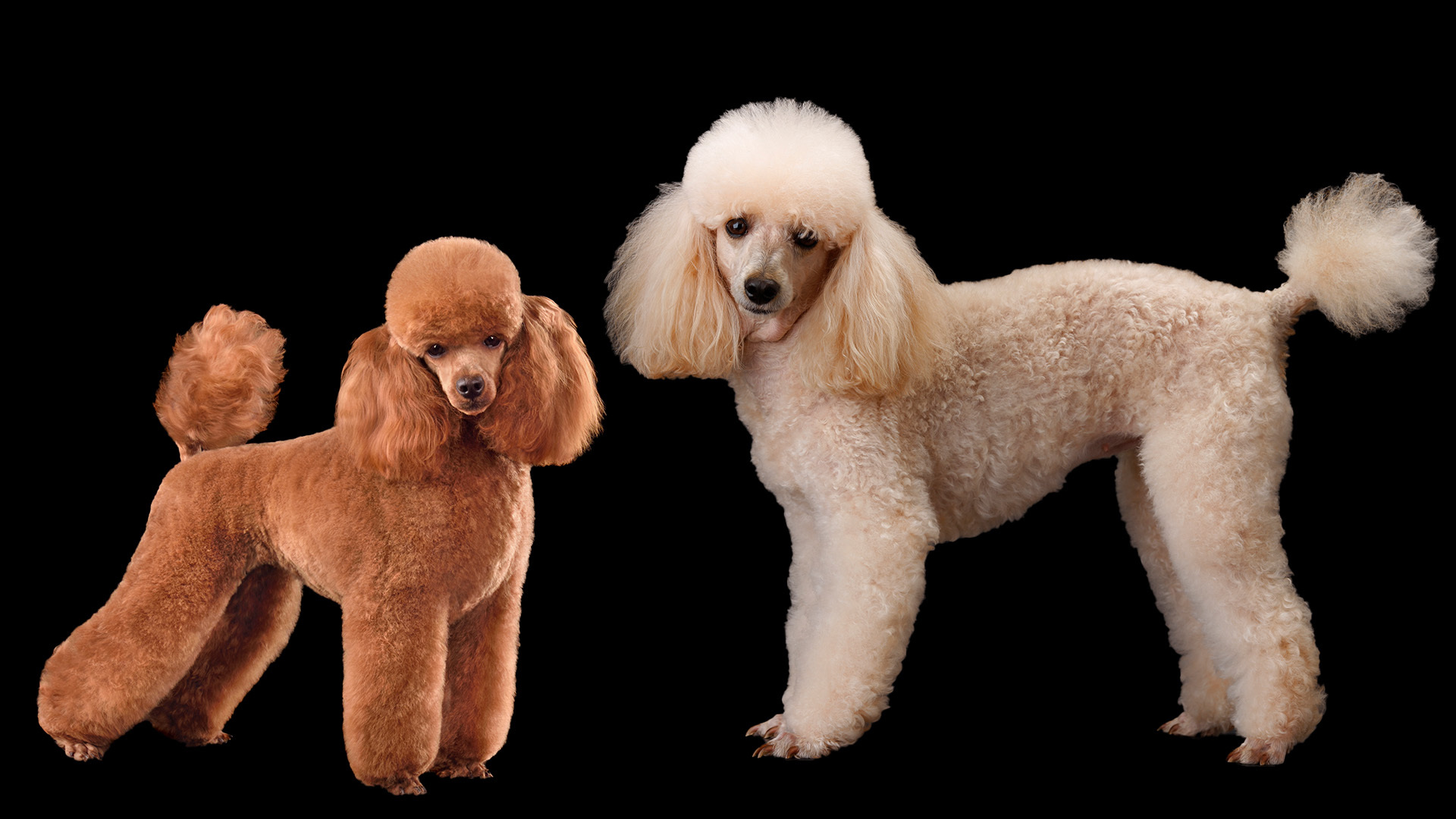
Miniature poodle vs toy poodle – what's the difference, we hear you ask? Well, as it turns out, not a whole lot! While the miniature poodle is slightly taller and heavier than the toy poodle, both are identical in terms of their temperament. So if you're looking for an active, adaptable, and affectionate companion, poodles (of all sizes) are a great choice.
Whether you opt for a miniature or toy poodle, these dogs love to play and run around. Poodles are also one of the smartest dog breeds, so giving their brains a good daily workout with puzzles and games is really important.
To find out more about the miniature and toy poodles, we turned to expert vet Dr Rebecca MacMillan. Below, she reveals everything you need to know about these colorful characters, including whether or not they're easy to train and a few common health issues that are worth being aware of.
Size: miniature vs toy poodle
The miniature poodle is typically a little larger than the toy poodle and was bred down from the standard poodle. Miniature poodles are between 10–15 inches tall and weigh up to 15 pounds.
Toy poodles are the smallest of all the poodles, standing no more than 10 inches tall. They're pretty tiny in terms of their weight, too, weighing between four and six pounds.
Appearance: miniature vs toy poodle
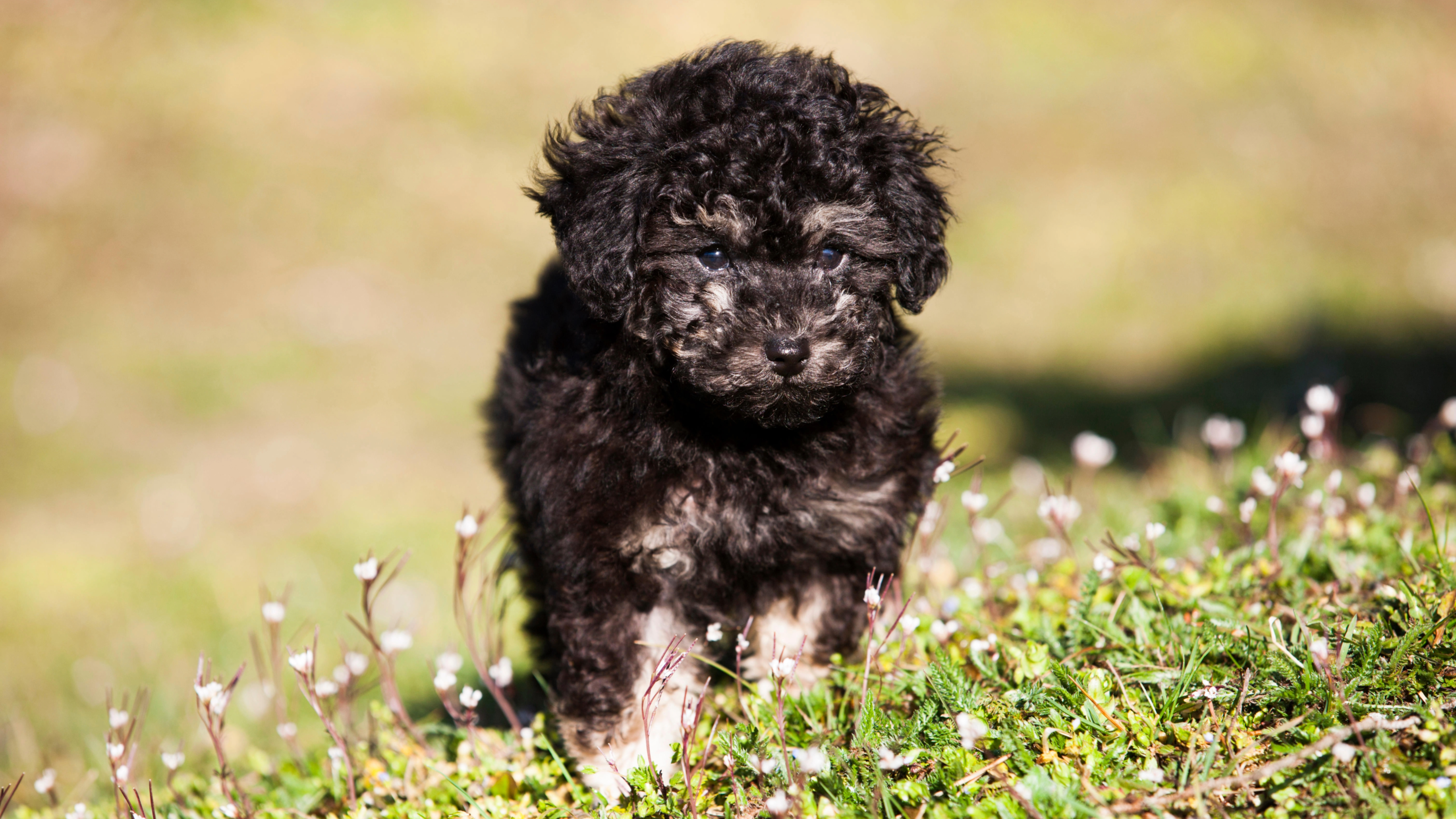
When it comes to appearance, the only thing that separates the miniature poodle from the toy poodle is their height and weight. Other than that, they're pretty identical! What’s likely to make them look different is their haircuts – this can really change their appearance and throw you off.
Both the miniature and the toy poodle have soft and curly medium-length fur, although the miniature does have a bit more floof. All poodles come in a range of different coat colors, from ink black and warm chocolate all the way through to apricot and white.
Get the best advice, tips and top tech for your beloved Pets
All three poodle varieties have the same build and proportions, so expect a square body, straight back, and a long, elegant neck. They have long muzzles, dropped ears, and long legs.
Trainability: miniature vs toy poodle
Miniature poodles and toy poodles aren't actually different breeds, they've just been selectively bred to produce their varying sizes. Because of that, you'll find they're pretty much identical when it comes to their intelligence levels and how easy they are to train.
"Both poodle types are very intelligent and responsive, which makes training easy," says Dr MacMillan. "They are very people-oriented and eager to please. These little dogs can learn a variety of commands and tricks with the right positive reinforcement!
“Just remember to teach these dogs how to be happy being left alone for short periods. Separation anxiety is common in both poodle types."
Exercise: miniature vs toy poodle
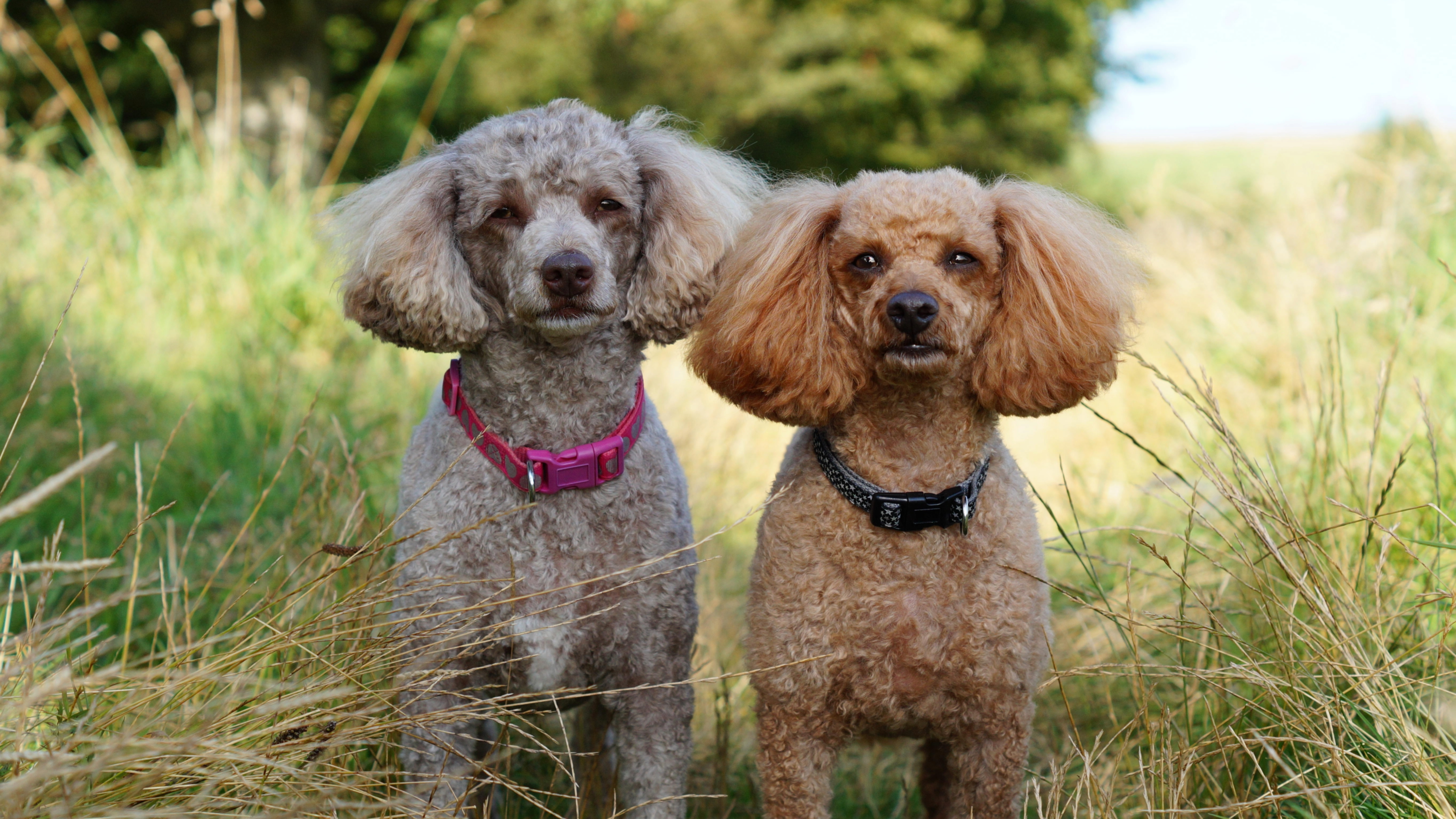
As you'd expect from this breed, both the miniature and the toy poodle are fairly energetic dogs, although you may find the toy poodle needs slightly less physical exercise than the miniature.
"Both poodle types are reasonably energetic," Dr MacMillan confirms. "The toy poodle needs around 30-60 minutes of exercise each day, whereas the miniature poodle may need a bit more at around 45-60 minutes per day."
Because poodles are so incredibly bright, you want to make sure you exercise both their bodies and their brains.
"Plenty of mental stimulation will help these dogs to stay happy," Dr MacMillan explains. Brain games and the best dog puzzle toys will provide them with a good challenge, and Dr MacMillan also recommends things like agility and obedience, both of which they excel at.
Grooming: miniature vs toy poodle
Break out the best dog brush and be sure to set aside some grooming time each day because, according to Dr. MacMillan, both the miniature and the toy poodle have high-maintenance coats.
"They have thick curly coats which need regular attention to prevent matts and tangles," she explains. "Most owners will take their dog to a groomer to be professionally clipped. This needs to be done approximately every six weeks, with regular brushing at home in between. As well as this, they will need regular nail trims and daily oral care."
While spending time grooming your canine companion may seem like a chore at first, when it comes to how to bond with your dog, those daily brushing sessions can work wonders for strengthening your relationship.
Health: miniature vs toy poodle
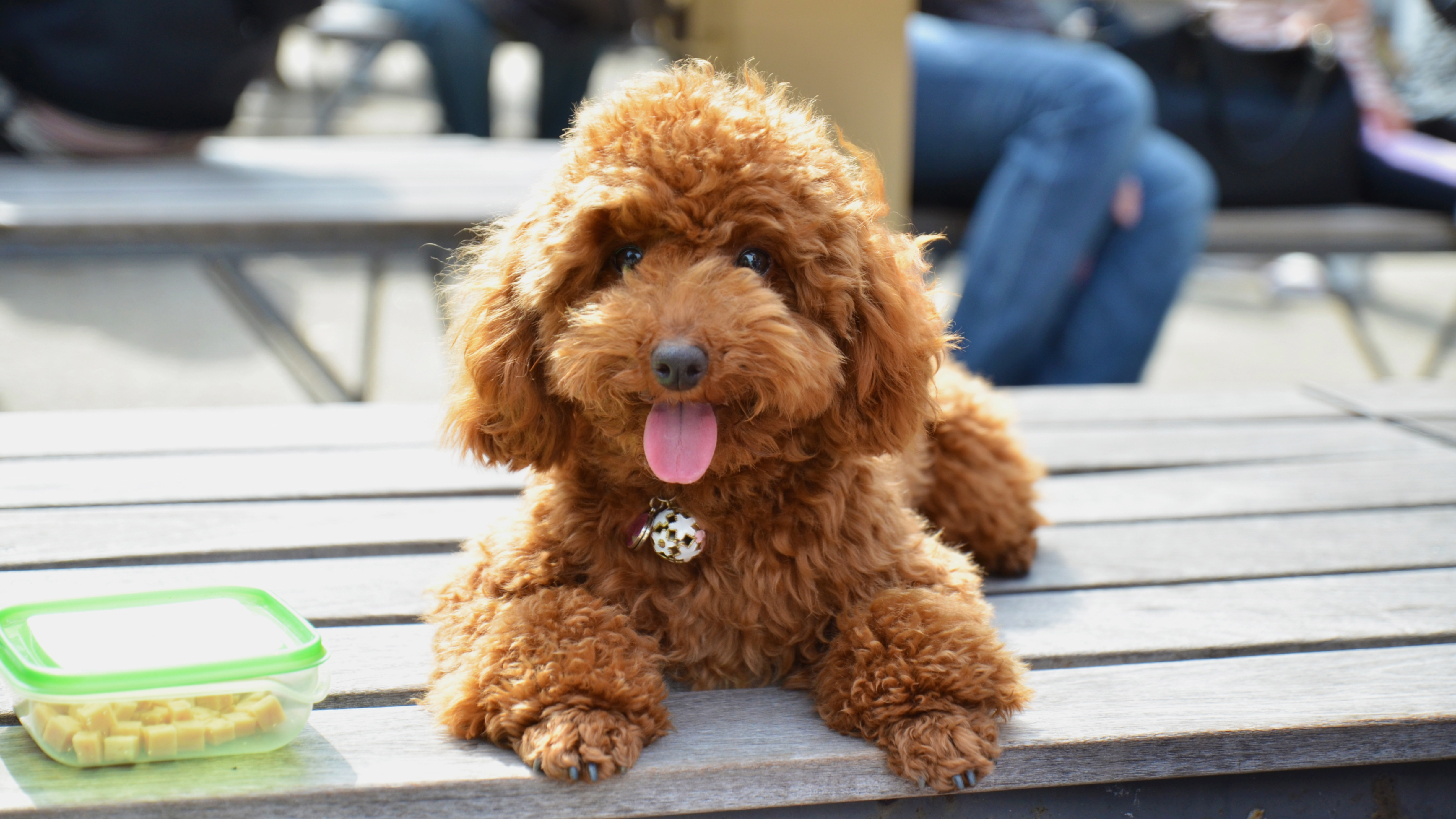
According to Dr MacMillan, both the miniature and toy poodles are prone to several health problems.
"Some of these have a genetic basis, including cataracts and progressive retinal atrophy (PRA)," she explains. "These inherited eye complaints can cause loss of vision and progress to blindness. Poodles are also prone to problems like distichiasis (extra hairs rubbing on the surface of the dog’s eye) and entropion (rolling inwards of the eyelid)."
On top of that, Dr MacMillan says that Leg Calves Perthes Disease is also seen in both miniature and toy poodles.
"This painful condition is often first diagnosed at around six to nine months of age. It is thought to be caused by reduced blood flow to the head of the femur, thereby affecting the ball part of the ball and socket joint. The bone then becomes brittle and can easily fracture."
Something else to watch out for is sebaceous adenitis, which Dr MacMillan says is common in poodles.
"This is an inflammatory disease that affects the hair follicles. Symmetrical hair loss may be seen, and flaky skin."
Other common health complaints that affect many small breeds, including miniature and toy poodles, are things like patella luxation and dental disease.
"Toy and miniature poodles can suffer from excessive tartar buildup, gum inflammation, and tooth loosening. Extractions are often required in advanced dental disease, so I recommend that owners of these poodles implement a daily oral care regimen from a young age," Dr MacMillan explains.
If you decide to adopt a poodle and want to stay on top of their dental hygiene, our guides to the best dog toothbrush and the best dog toothpaste (both vet-recommended!) will help you do that.
Owner suitability: miniature vs toy poodle
Because the miniature and toy poodle are so similar, so as long as you like poodles, you'll find both of these dogs make wonderful, flexible companions.
"Both these little dogs are adaptable and would be happy in the city or countryside, provided they get enough exercise," says Dr. MacMillan. "They would also be a fine choice for either a single owner or a family.
“As with all dogs, children must be supervised and taught to handle them carefully. Any new owner must be prepared for the poodle’s grooming needs, however, as well as being able to budget for their veterinary care."
Read next: Cockapoo vs Cavapoo
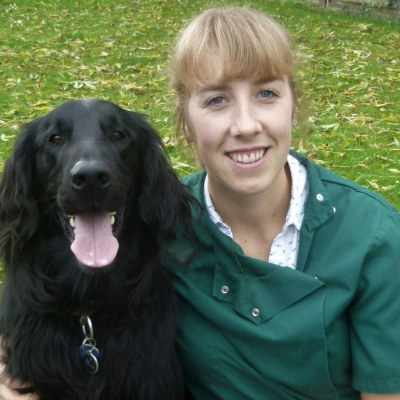
Rebecca is a veterinary surgeon who graduated in 2009 from the Royal Veterinary College in London. She has a wealth of experience in first opinion small animal practice, having done a mixture of day-to-day routine work, on-call emergency duties and managerial roles over the years. Rebecca enjoys medicine in particular and she is proud to have recently achieved a BSAVA postgraduate certificate in small animal medicine (with commendation).
She writes on various feline and canine topics, including behavior, nutrition, and health. Outside of work and writing she enjoys walking her own dog, spending time with her young family and baking!
Edited by Georgia Guerin and Alexis de Leaver.
This feature was last updated in May 2025 by Kathryn Williams.

Kathryn is a freelance writer who has been a member of the PetsRadar family since it launched in 2020. Highly experienced in her field, she's driven by a desire to provide pet parents with accurate, timely, and informative content that enables them to provide their fur friends with everything they need to thrive.
Kathryn works closely with vets and trainers to ensure all articles offer the most up-to-date information across a range of pet-related fields, from insights into health and behavior issues to tips on products and training.
When she’s not busy crafting the perfect sentence for her features, buying guides and news pieces, she can be found hanging out with her family (which includes one super sassy cat and a kitten), drinking copious amounts of Jasmine tea and reading all the books.
She has written for a range of publications, including Fit&Well, Top Ten Reviews, LiveScience, Goodto, and Product Hunt.
